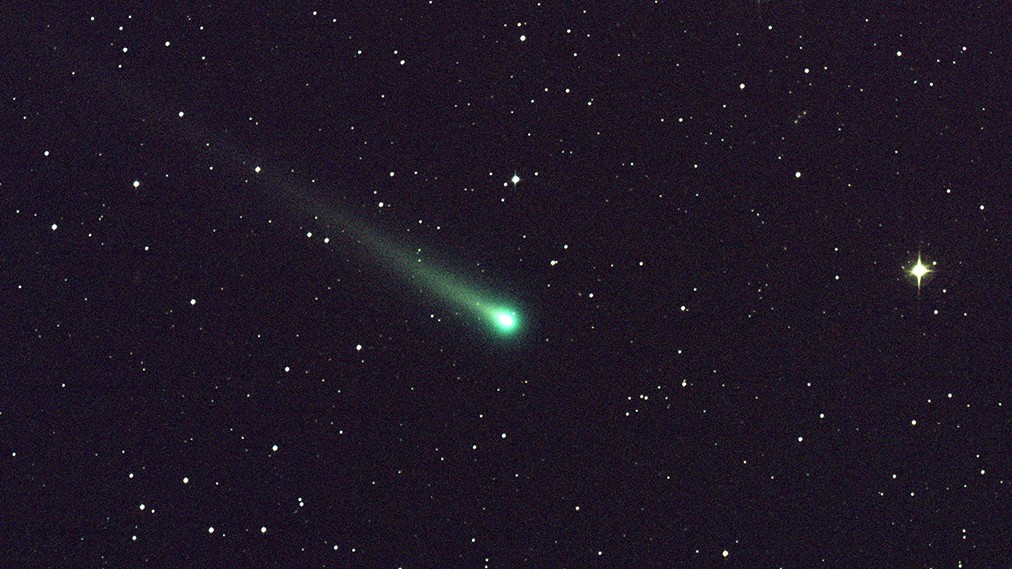How to watch the rare green comet whiz past Earth tonight
Tonight (Feb. 1), the green comet C/2022 E3 ZTF will make its closest approach to Earth since the age of the Neanderthals. Here's how to view it.

A comet with a greenish glow will make its closest approach to Earth since the age of the Neanderthals tonight (Feb. 1 to 2), and if you look in the right place at the right time, you might be able to spot it.
The comet, known as C/2022 E3 (ZTF), will come within 26.4 million miles (42.8 million kilometers) of our planet, its closest approach in about 50,000 years, according to EarthSky. The comet has been brightening in the night sky since January and will pass between the orbits of Mars and Earth over the next couple of nights, traveling at around 128,500 mph (207,000 km/h).
Viewers in the Northern Hemisphere who have a clear view of the night sky away from significant light pollution will be able to spot the comet without a telescope. If you're unable to get to a place with clear skies, however, you can still catch the action by tuning into the Virtual Telescope Project's livestream of the event, which will start at 11 p.m. EST, or watching here:
To view the comet, look to the northern sky between the Big Dipper and the North Star.
"It's the patch of sky immediately to the right of North, bounded between the Dippers," Ben Burress, an astronomer at Chabot Space and Science Center in California, told KQED. "Right now the comet is between the Big and Little Dippers. It will look like a small fuzzy patch of light, possibly slightly greenish."
Why green? As comets whiz by the sun, the star's energy vaporizes the comet's ices into gas, which form a coma — a tenuous, short-lived atmosphere around the rocky body. The color of that coma depends on the makeup of its gas. In the case of Comet C/2022 E3, some of that gas contains diatomic carbon, a molecule made up of two fused carbon atoms. When those molecules are blasted by ultraviolet radiation, they glow green.
Comet C/2022 E3 was discovered in March 2022 by astronomers using the Zwicky Transient Facility in California.
Get the world’s most fascinating discoveries delivered straight to your inbox.

JoAnna Wendel is a freelance science writer living in Portland, Oregon. She mainly covers Earth and planetary science but also loves the ocean, invertebrates, lichen and moss. JoAnna's work has appeared in Eos, Smithsonian Magazine, Knowable Magazine, Popular Science and more. JoAnna is also a science cartoonist and has published comics with Gizmodo, NASA, Science News for Students and more. She graduated from the University of Oregon with a degree in general sciences because she couldn't decide on her favorite area of science. In her spare time, JoAnna likes to hike, read, paint, do crossword puzzles and hang out with her cat, Pancake.



